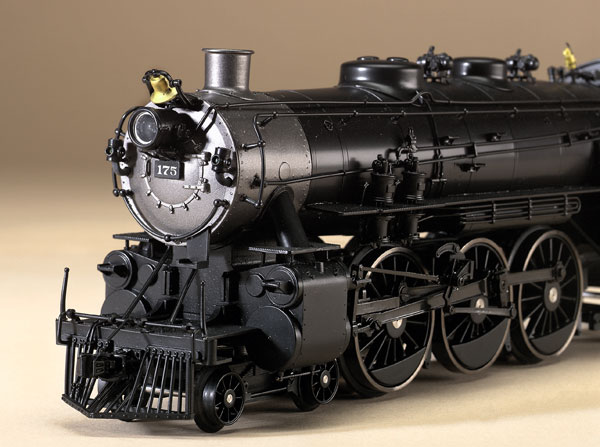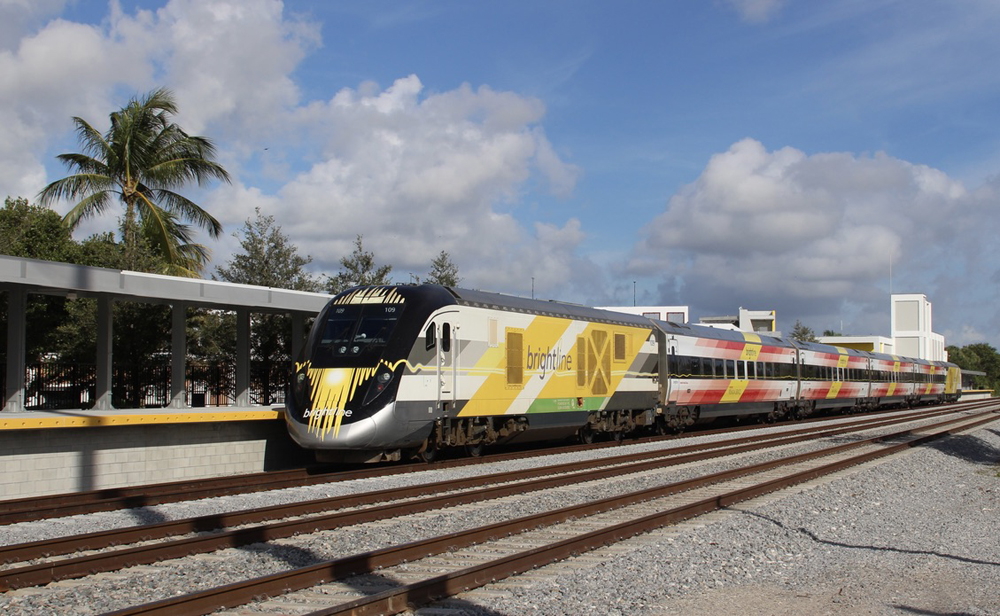According to A Century of Reading Company Motive Power, 1832-1941 (The Reading Co., 1941), the first 4-6-2 Pacific-type locomotives operated by the Reading Lines were 30 class G1sa steamers built in 1916. They were designed to replace 4-4-2 Atlantic-types on Baltimore & Ohio through trains running between Philadelphia and Jersey City, N.J. The 62-year-old reference book also states that “the engine is still in high speed service.” Alas, today that’s true only on model railroads!
Five G2sa-class Pacifics were built for the Reading. Their boilers were slightly larger than those of the G1sa and G1sb-classes and one of the Pacifics, no. 178, was streamlined.
G1sa no. 134 pulled the Reading’s last regularly scheduled steam train on May 6, 1952. The G1sa locomotives were scrapped between 1951 and 1953, while the G2sa locomotives were cut up in 1954.
The model
As expected with brass locomotives, the Pacific looks absolutely fantastic. The brass body is smooth and free of blemishes and paint application is superb.
There are some subtle differences between the two models. The most obvious are boiler-top features. The G1sa also has solid pilot wheels, additional steam piping, a single steam generator, and a different sander valve location than the G2sa. On the other hand, the G2sa has two steam generators, spoked pilot wheels, and a slightly different cab style than the G1sa.
The business end of the two Pacifics are especially attractive. The pilots are well crafted and there are twin air-hoses, dummy couplers, uncoupler bars, and decks with safety tread. The decks also features two slim staffs for flying classification flags. I really like these, but they did get knocked and bent a bit in routine handling. It was with a small amount of anxiety that we straightened them out.
The boilers feature separately applied service steps, tubing, compressors, generators, whistles, and of course, handrails. One item I thought especially snazzy was conduit for electrical lines running from the cab of no. 175 out to the headlight. This is the sort of detail that makes a model unique, not just one of 4,000 shipped.
Wooten fireboxes give these locomotives another touch of pizzazz. John E. Wooten, general manager of the Reading in 1877, introduced these boxes, which were designed to burn culm, a cheap by-product of anthracite processing. The fireboxes needed to be wider than those on a typical steam locomotive. The Weaver model accentuates this feature, making these models stand out in a field of conventional-firebox locomotives.
The locomotives have detailed cabs and the backheads feature firebox doors. There are 1:48 scale crew figures ready for duty in the cabs as well.
Painting and decoration on each model is first rate. The locomotives have a fine black finish and the gold numbers and striping are cleanly applied. I can see why the Reading adopted the gold striping for all its locomotives – it really boosts the appearance of your generic black paint job! Weaver offers two cab numbers for each version: 175 and 177 (G2sa) and 109 and 128 (G1sa).
On the test track
Both Pacifics feature can-style motors and our samples also included the optional Lionel TrainMaster Command Control and RailSounds systems.
The drive mechanism on our G2sa sample ran rough. Moving along in conventional mode at a fast clip things weren’t too bad, but when the throttle was taken down to 12 volts or lower the tightness of the drive mechanism was obvious, and the sputtering movement was accentuated audibly by the RailSounds system, which mirrored the sudden speed changes. The drive mechanism on our G1sa sample was smoother, but it still required a suitable break-in time.
The conventional-mode low-speed test average for the locomotives was 14.3 scale mph while the high-speed average was 64 scale mph.
The 7 pound, 4 ounce locomotives have a drawbar pull of 1 pound, 14 ounces, which is roughly equal to 90 free-rolling freight cars.
Tacked on to the front of our 25-car mixed make and vintage freight train at 18 volts in conventional mode, the Pacifics were timed at 45 scale mph.
The locomotive has a pair of pickup rollers roughly 31/2 inches apart, as does the tender. The smoke unit control is beneath the cab. The SignalSounds or RailSounds switch and the volume control are nestled beneath the front truck of the tender, but pivoting the truck freely caused a wheel to contact the switch button. The engine’s tender-mounted coil coupler worked properly.
The locomotives feature illuminated headlights and classification lights. The prototypes didn’t have backup lights, so neither do the models.
I really liked the sound of both Pacifics, especially their whistles, which feature a faint echo.
Weaver’s brass G-class Pacifics are great models of some key (if not glamorous) engines from a notable Eastern carrier. Both are locomotives that you’re not likely to see in die-cast metal any time soon. While drop-dead gorgeous, the rough out-of-the-box mechanism of one of our samples was a disappointment.













